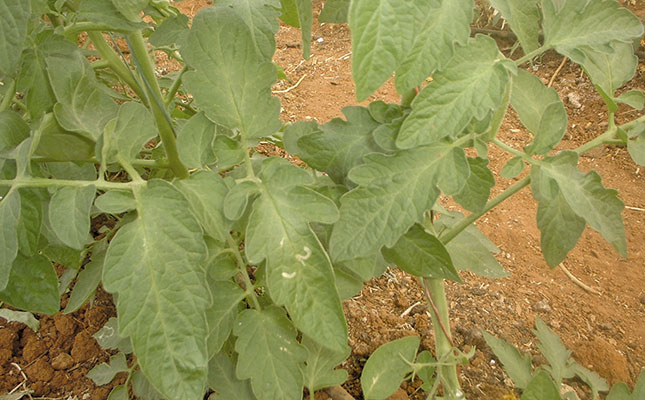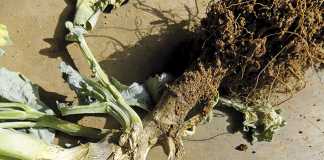
It is typically a warm- weather pest and is usually not a problem in winter in subtropical areas. The night-flying moths lay single eggs at random in the land. The young caterpillars attack the foliage before turning their attention to the pods. It almost seems as if their sole aim is to damage as many pods as possible – as opposed to eating their fill – because they often simply eat a hole in a pod before moving on again.
When the pods are large enough, they sometimes eat their way into the pod and continue feeding there. Needless to say, bollworms can wreak havoc in a short time, leaving you to separate the good pods from the damaged, unmarketable ones.
The moths tend to emerge from their cocoons en masse in early summer when the weather is favourable. Later on, the moth activity is sporadic.
The cheapest and most effective way of controlling this pest is to set pheromone traps around the land and check them every day or two. The traps will show you when the moths are around and you need spray only when necessary.
It’s important to use a pesticide that will not harm beneficial insects. There are many such products available.
Loopers and miners
Other caterpillar species can also cause damage, but are more sporadic. One is the semi-looper. This may be absent for years and then suddenly appear in large numbers. If you walk through your crops and flush out moths with a golden patch on their wings, spray as soon as you can to prevent a problem from developing. Leaf miner is a potential threat, but it is kept in check by parasitic wasps.
If you use a spray product that kills off these wasps, you may have an infestation problem. The leaf miner Liriomyza huidobrensis does the most damage, usually targeting the area along the veins of the leaf, where the most food is available. It can increase rapidly and wipe out the crop if not brought under control.
Leaf miners attack a number of crops and weeds. The parasitic wasps keep them in control in weedy areas outside the lands. An equilibrium is maintained when there are a few wasps and leaf miners present. If you plant a host crop, some of these leaf miners will come onto the land. Should you then spray the wrong pesticide, wasp numbers will drop and these predators will be unable to keep the leaf miners under control. Crop damage will result.
Actively look for wasps
If you find the leaf miner in a crop, check for these tiny wasps. If you can’t find them, use a product that targets the leaf miner and spares wasps. This will allow wasps to start their work while reducing the numbers of leaf miner to a tolerable level. Pesticides rarely give you complete control of leaf miner anyway.
A pest that always appears in my bean crops is the black aphid. This can spread rather rapidly and, apart from the damage it causes, it can transmit viruses. There never seem to be enough ladybirds and parasitoids to control this pest. This is possibly due to the fact that I plant relatively small areas, or that there are ants present to protect the aphids from predators. Ants look after them for the honeydew which they secrete and treat the aphids as ‘livestock’.
There are only a few effective insecticides available that target aphids and do not harm beneficial insects. A number of other pests include some species of stink bugs and beetles, but these usually do only limited damage.












